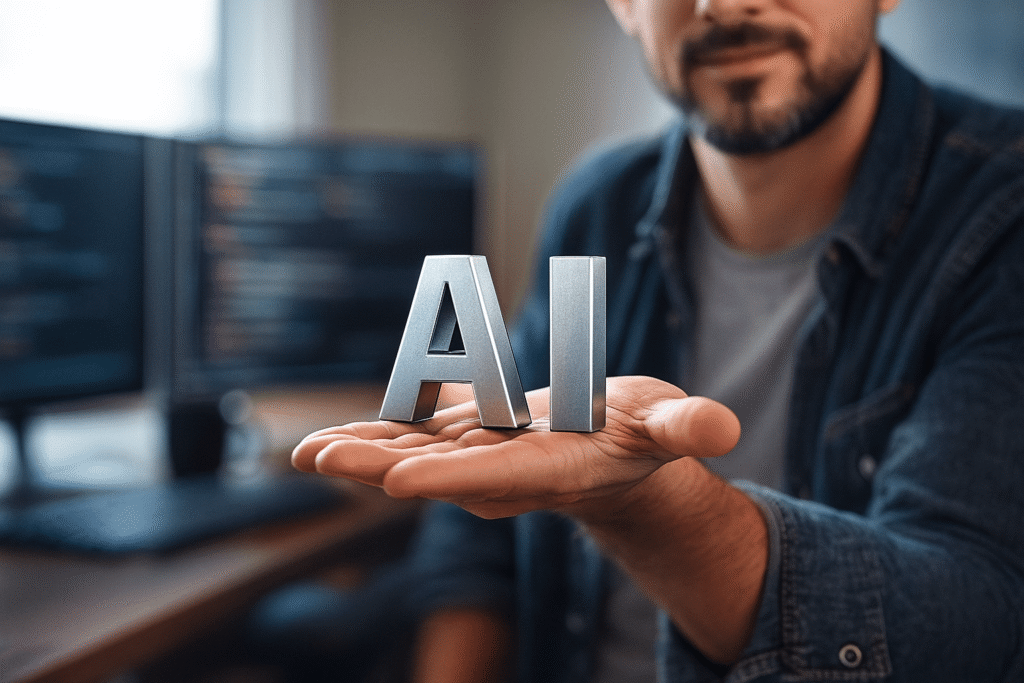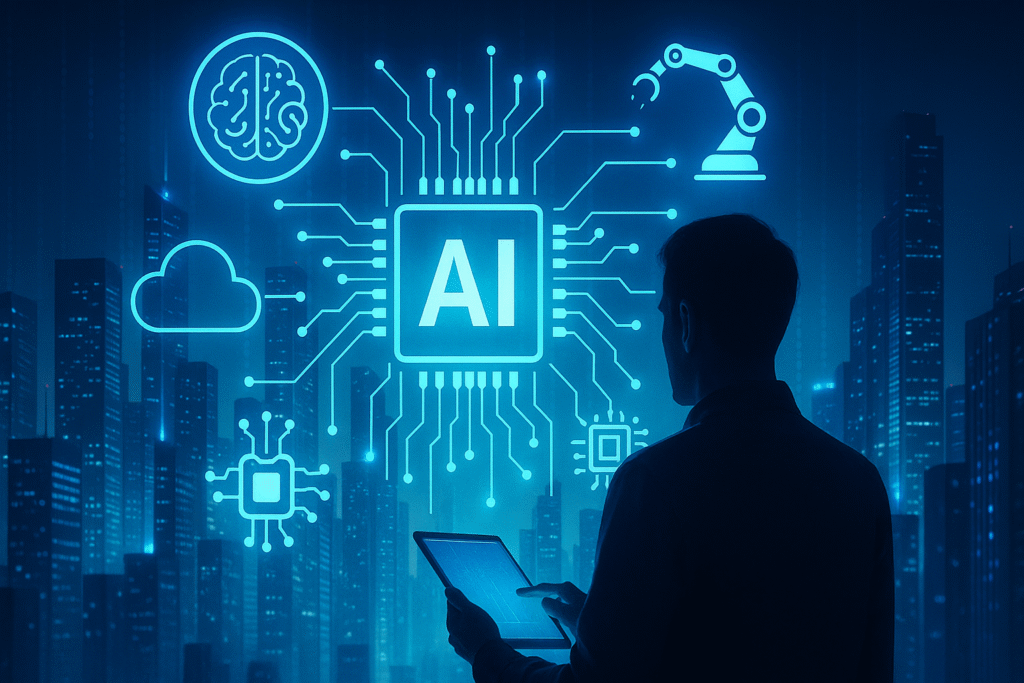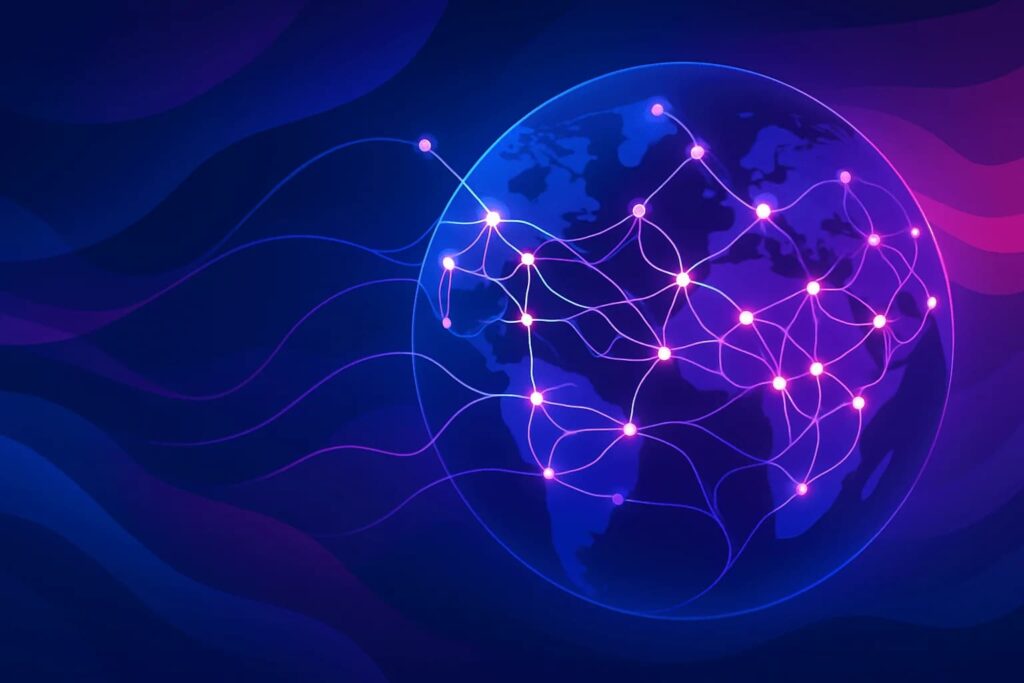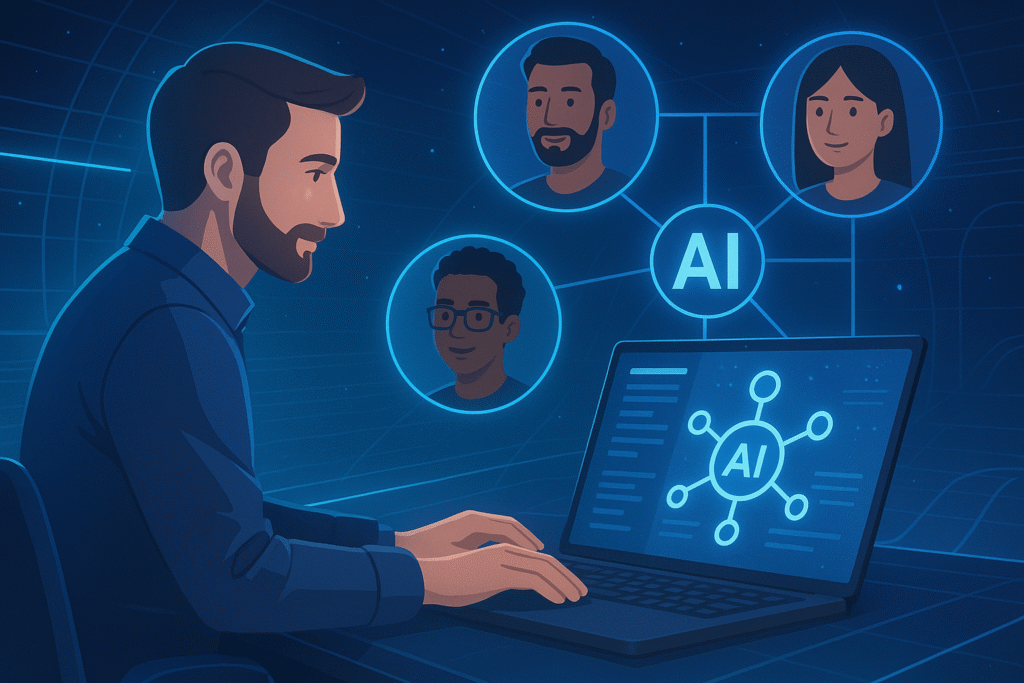The Rise of Agentic AI
👍 Rating — 5 (1 vote)
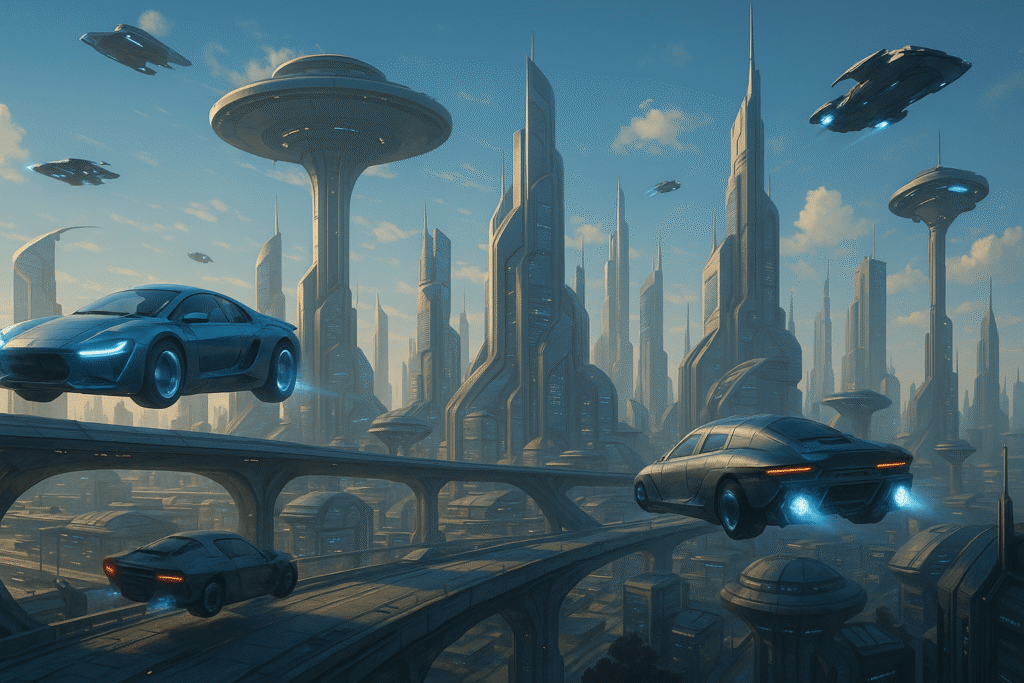
For years, artificial intelligence has been a powerful assistant — answering questions, drafting emails, and generating ideas at lightning speed. But a quiet revolution is underway. AI is learning to think, plan, and act on its own.
Welcome to the era of agentic AI — systems that don’t just respond to human commands, but pursue goals independently. These aren’t chatbots or tools anymore — they’re digital teammates capable of managing projects, coordinating with other agents, and adapting in real time.
This shift is redefining what “work” means. Instead of humans guiding every click and prompt, we’re entering an age where machines collaborate, negotiate, and create — side by side with us. The question is no longer what can AI do? but how far are we willing to let it go?
Table of Content
What Is Agentic AI?
Agentic AI represents the next evolutionary leap in artificial intelligence — systems that don’t just process data or answer questions but act with purpose. In simple terms, these are AI models capable of setting goals, making decisions, and executing tasks autonomously, often coordinating with other agents or software tools along the way.
Unlike traditional AI, which waits for human input, agentic AI can decide what to do next. It uses memory, reasoning, and feedback loops to break down complex objectives into smaller steps and continuously refine its actions. Think of it as the difference between asking an AI to write a report and having one that researches, drafts, edits, and delivers it without further instruction.
At its core, agentic AI combines three key capabilities:
- Autonomy – the ability to act without constant prompts or supervision.
- Goal orientation – the capacity to define, pursue, and adapt to objectives.
- Interactivity – seamless integration with APIs, databases, and even other AI agents.
This makes agentic AI not just a tool — but an active participant in problem-solving and innovation, bridging the gap between automation and genuine cognitive collaboration.
Why Agentic AI Is a Game-Changer
Agentic AI is rewriting the rules of how work gets done. Until recently, AI was reactive — it waited for humans to issue commands. But agentic systems flip that model upside down. They can reason, plan, and act proactively toward a goal — without step-by-step instructions. That shift from assistive to autonomous is what makes it revolutionary.
Imagine an AI that doesn’t just answer a prompt but launches a product demo, schedules follow-ups, analyzes user data, and adjusts marketing campaigns — all without direct human input. That’s not science fiction anymore; it’s emerging reality.
Here’s why it matters:
- Massive productivity gains. Agentic AI handles entire workflows, freeing humans to focus on strategy, creativity, and leadership.
- Smarter decision-making. It can process vast data streams in real time, detect opportunities or issues instantly, and take corrective actions.
- Continuous improvement. Through memory and self-reflection, agentic systems learn from results and evolve on their own.
The result is a new kind of collaboration — one where humans set the vision and AI executes the details with speed, consistency, and precision. In this model, teams no longer just use AI tools; they work alongside autonomous partners that amplify what’s possible.
The Technology Behind Agentic AI
Behind the buzzword “agentic AI” lies a complex ecosystem of technologies working in harmony to give machines something that looks a lot like initiative. It’s not one breakthrough — it’s the fusion of several key advancements that together allow AI systems to reason, remember, and act autonomously.
Here’s what powers this new intelligence:
- Large Language Models (LLMs): The backbone of most agentic systems. Advanced models like GPT-5 or Claude 3.5 provide reasoning, natural language understanding, and context awareness. These models act as the “brain,” interpreting goals and generating logical next steps.
- Memory Architectures: Agentic AI needs to recall past actions, learn from them, and build long-term context. This is achieved through vector databases and episodic memory systems that store both data and experience — essentially, giving AI a “working memory.”
- Tool Use and API Integration: Modern agents don’t work in isolation. They connect with external tools — from web browsers and databases to Slack and Jira — enabling them to gather information, execute commands, and communicate like digital employees.
- Reasoning and Planning Engines: Agentic AI isn’t just about one model doing everything. In emerging architectures, multiple agents — each with its own specialization — collaborate to complete complex objectives faster and more accurately.
- Multi-Agent Collaboration Systems: Agentic AI isn’t just about one model doing everything. In emerging architectures, multiple agents — each with its own specialization — collaborate to complete complex objectives faster and more accurately.
Together, these components form the foundation of AI systems that can operate with minimal human oversight. The result is a new digital workforce — one that can think strategically, act independently, and continuously improve its own performance.
Real-World Applications Emerging in 2025
Agentic AI is moving from research labs into boardrooms, startups, and development pipelines — reshaping how entire industries operate. What was once a theoretical concept is now turning into tangible productivity gains and new business models.
Here are some of the most transformative use cases already emerging in 2025:
- 💻 Software Development: AI agents like Devin and AutoGPT are taking on the role of autonomous engineers — writing, debugging, testing, and even deploying code. Instead of manually assigning tasks, tech teams can now delegate entire features to AI that understands product requirements and learns from past commits.
- 📈 Marketing and Sales: Agentic systems run continuous A/B tests, optimize ad spending, segment customers, and launch targeted campaigns without waiting for a manager’s command. They act as always-on growth strategists who never sleep and never miss a trend.
- 🏢 Operations and Project Management: From scheduling to resource allocation, AI agents can coordinate projects, track milestones, and resolve bottlenecks in real time. In hybrid or offshore teams, they’re becoming the digital glue that keeps everything aligned.
- 👥 Human Resources and Recruiting: AI recruiters autonomously screen candidates, schedule interviews, and even evaluate cultural fit. Combined with human oversight, this results in faster, bias-reduced hiring decisions and a smoother candidate experience.
- 💰 Finance and Analytics: Agentic AI can manage entire analytics pipelines — pulling financial data, spotting anomalies, generating reports, and forecasting outcomes. It’s like having a 24/7 CFO assistant powered by data, not caffeine.
- 🌐 Customer Experience: Instead of static chatbots, agentic AIs handle customer issues end-to-end — understanding intent, executing backend actions, and following up until the problem is resolved.
These use cases aren’t experiments anymore — they’re live pilots and early deployments proving that autonomous AI isn’t a futuristic concept but a competitive advantage. The companies adopting it now aren’t just optimizing processes — they’re redefining what “work” means in a world where machines can take initiative.
Opportunities and Economic Implications
The rise of agentic AI isn’t just a technological milestone — it’s an economic turning point. As machines gain the ability to act autonomously, they’re not merely increasing productivity; they’re redefining the structure of work itself.
Here’s what this shift means for businesses, workers, and the global economy:
- 🚀 Unprecedented Productivity Gains. Agentic AI can handle entire workflows that once required full departments. From automating repetitive tasks to managing multi-step processes, companies can scale faster and operate leaner — achieving “always-on” productivity that doesn’t depend on time zones or human fatigue.
- 💼 The Rise of the “AI Workforce”. We’re entering an era where teams will include digital employees: specialized agents that code, analyze, schedule, and communicate. Human workers will evolve into AI orchestrators — managing networks of agents instead of individual contributors. This creates new roles, not replacements.
- 💡 Lower Barriers to Innovation. Startups can now launch products with tiny teams, using agentic systems as force multipliers. What used to take months of engineering and operations can be done in weeks. The playing field between small innovators and large corporations is suddenly leveling.
- 🌍 Economic Efficiency and Global Reach. Agentic AI accelerates globalization. With AI handling communication, coordination, and compliance across borders, companies can tap into global opportunities faster — whether hiring offshore talent, entering new markets, or managing distributed teams.
- 📊 Redefining Value Creation. As AI handles execution, human creativity, judgment, and strategy become the new currencies of economic value. This shift pushes organizations to invest in roles that combine technical literacy with leadership and ethics.
In essence, agentic AI isn’t just automating tasks — it’s rewriting the economics of labor. The winners of this new era will be the companies that learn to blend human ingenuity with machine autonomy, turning AI from a cost-cutting tool into a growth engine.
Ethical and Governance Challenges
As agentic AI systems gain autonomy, the question is no longer what can they do — but what should they be allowed to do. When machines can act independently, make decisions, and interact with other systems, the traditional lines of accountability and control begin to blur.
Here are some of the most pressing challenges shaping the debate:
- ⚖️ Accountability and Responsibility. If an autonomous AI makes a harmful or biased decision, who’s liable — the developer, the deployer, or the algorithm itself? Current legal frameworks weren’t built for agents that can initiate actions or influence outcomes without direct human instruction.
- 🔒 Security and Control. With autonomy comes risk. Agentic systems capable of accessing APIs, sending messages, or executing transactions could be manipulated or exploited by malicious actors. Designing robust permission systems, audit trails, and “kill switches” will be essential.
- 🧠 Transparency and Explainability. As AI agents become more complex, their reasoning processes grow harder to interpret. Understanding why an agent made a particular decision — and being able to explain it — is critical for trust and compliance.
- 🌍 Regulation and Global Governance. Different countries are racing to create AI laws, but none have yet addressed the nuances of autonomous AI. Without coordinated global standards, agentic systems may evolve faster than the policies meant to contain them.
- 🧩 Ethical Alignment. Perhaps the biggest challenge is philosophical: how do we ensure that autonomous AI aligns with human values? When an AI can set sub-goals, evaluate trade-offs, and prioritize efficiency, it might reach conclusions that conflict with social or moral norms.
Balancing innovation with oversight will define the next phase of AI governance. Companies that build transparency, safety, and accountability into their agentic systems from day one won’t just avoid risk — they’ll lead the conversation on ethical AI progress.
Final Thoughts
Agentic AI marks the beginning of a profound shift — from machines that assist to machines that act. It’s not just another technological advancement; it’s a redefinition of how we create, collaborate, and compete.
The rise of agentic systems will challenge every assumption we’ve had about work, productivity, and decision-making. But it will also open extraordinary opportunities: teams that never sleep, products that build themselves, and innovation that scales at the speed of thought.
The key will be balance. Human intuition, ethics, and creativity must remain the compass that guides this new wave of intelligent autonomy. The future won’t be about humans versus AI — it will be about humans with AI, co-creating a smarter, faster, and more adaptive world.
The era of intelligent agency has begun — and it’s rewriting what progress looks like.
FAQ
Traditional AI models, like chatbots or image generators, operate reactively — they wait for human input and respond within predefined boundaries. Agentic AI, on the other hand, acts proactively. It can set goals, plan multi-step actions, and execute them autonomously, often collaborating with other systems or agents to achieve outcomes without continuous supervision.
Not exactly — it’s more likely to reshape jobs than eliminate them. Agentic AI automates execution, but humans still define goals, provide context, and make ethical or strategic decisions. The workforce of the future will blend humans and AI agents, where people act as orchestrators — guiding, training, and managing autonomous systems rather than performing repetitive tasks.
The biggest challenges are accountability, transparency, and control. Autonomous systems that act on their own can make unpredictable or biased decisions, or even be exploited by bad actors. This is why developing strong governance frameworks, permission systems, and audit trails is critical. The goal is to let AI act independently — but always under a clear and ethical human framework.
TurnKey Staffing provides information for general guidance only and does not offer legal, tax, or accounting advice. We encourage you to consult with professional advisors before making any decision or taking any action that may affect your business or legal rights.
Tailor made solutions built around your needs
Get handpicked, hyper talented developers that are always a perfect fit.
Let’s talkPlease rate this article to help our team improve our content.
Here are recent articles about other exciting tech topics!

